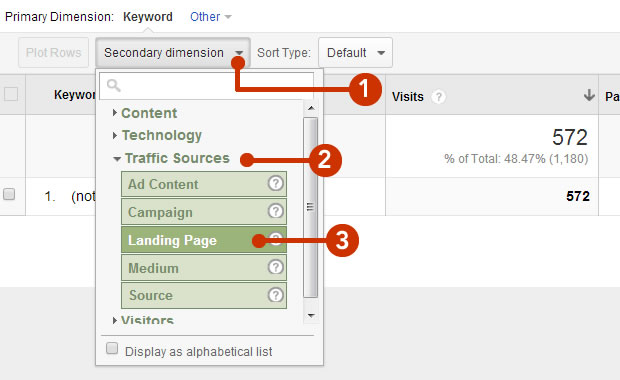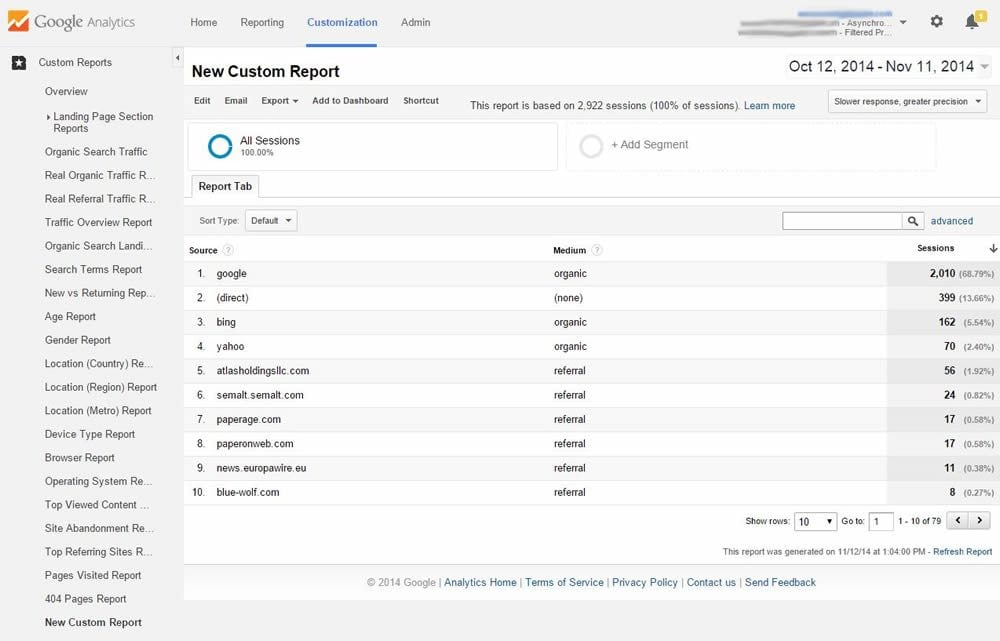The Significance of Secondary Dimension in Google Analytics for Your SEO
Wiki Article
Make The Most Of Coverage Precision With Secondary Measurement in Google Analytics
Comprehending exactly how to maximize reporting accuracy with additional measurements in Google Analytics can significantly enhance the depth of insights obtained from data evaluation. By including secondary dimensions strategically, marketing professionals can reveal concealed patterns and correlations that might not be immediately obvious when evaluating primary metrics alone.Recognizing Additional Dimensions in Google Analytics
Additional measurements enable users to section and further explore information beyond the key measurement selected. While the main measurement may show the complete number of page sights, including a second dimension such as 'source/medium' can provide insights right into where the web traffic originated from.Moreover, understanding second measurements is vital for creating a lot more tailored reports tailored to certain organization objectives. By picking the best mix of key and secondary dimensions, analysts can discover patterns, patterns, and relationships that could otherwise stay hidden. This nuanced technique to data analysis equips companies to make enlightened decisions based on a thorough understanding of customer behavior across numerous measurements.

Exactly How to Use Secondary Dimensions
When leveraging second measurements in Google Analytics, the practical application involves picking certain information criteria to further refine understandings past the primary dimension's range. To use second dimensions successfully, start by accessing the report or dataset where you desire to dive much deeper into the data. Within Google Analytics, find the main measurement that you are currently assessing. Once identified, click on the dropdown menu labeled "Additional Dimension." This action will certainly reveal a list of additional specifications that can be added to your evaluation. Pick the second measurement that straightens with your analytical objectives, such as 'Source/Medium,' 'Tool Group,' or 'Area.' By picking a second measurement, you can get extra thorough understandings right into customer habits, demographics, or purchase channels. Remember that secondary measurements help provide context and granularity to your main dimension data, allowing you to draw out more meaningful and actionable insights from your Google Analytics reports.Leveraging Additional Dimensions for Insights
Using secondary measurements in Google Analytics permits an extra detailed analysis of information, offering beneficial insights past the primary measurement's scope. By leveraging second dimensions, users can dive deeper right into the efficiency metrics of their site or application, uncovering surprise patterns and patterns that might not be immediately evident when just taking a look at key dimensions.One trick benefit of using additional measurements is the capacity to segment and filter data a lot more specifically. This can help marketers and analysts much better recognize the actions of specific user sections, such as new site visitors versus returning site visitors, or web traffic originating from various geographical areas.
Furthermore, secondary measurements allow customers to compare and comparison various information points within the very same record, giving an extra holistic sight of performance (Secondary Dimension in Google Analytics). For instance, matching the main dimension of landing pages with secondary dimensions like devices or demographics can reveal which pages are most effective in engaging customers on various gadgets or from different demographic groups.
Essentially, leveraging second dimensions look at here now in Google Analytics encourages users to extract richer insights from their information, leading to even more enlightened decision-making and eventually, improved efficiency.
Finest Practices for Secondary Measurements
When assessing data in Google Analytics, integrating additional dimensions properly improves the deepness of insights derived from the key metrics. To make the most out of secondary measurements, it is critical to adhere to best techniques that guarantee exact and purposeful coverage. It is essential to pick secondary measurements that align with the key metric see this here you are assessing. Selecting pertinent secondary measurements helps in giving context and a more clear understanding of the information being taken a look at.In addition, it is recommended to limit the number of secondary measurements made use of in a single report to prevent overwhelming the evaluation with too much info. Focusing on a few crucial additional dimensions each time can bring about even more workable and focused insights. In addition, consider explore different combinations of second and key measurements to uncover special patterns and patterns that might not be evident when considering the information alone.
Advanced Analysis Techniques With Second Measurements
Exploring intricate data connections with the tactical application of additional measurements can reveal nuanced insights go to this site that raise the depth of analysis in Google Analytics. By incorporating second dimensions with primary data collections, advanced evaluation strategies can be utilized to draw out important information. One such technique is mate analysis, where secondary measurements enable the division of users into teams sharing usual features. This technique allows a deeper understanding of customer habits patterns gradually, assisting in the recognition of patterns and the assessment of marketing projects' efficiency.In addition, additional dimensions can improve the analysis of conversion courses by providing extra context. Understanding the numerous touchpoints an individual communicates with prior to converting can be critical in enhancing the consumer journey - Secondary Dimension in Google Analytics. By making use of additional measurements to explore specifics such as web traffic resources or devices made use of, marketing professionals can tailor approaches to target high-converting channels successfully
Conclusion

To boost data evaluation and gain much deeper understandings into user actions, comprehending second measurements in Google Analytics is critical - Secondary Dimension in Google Analytics. Second measurements permit individuals to sector and even more dissect information past the main measurement selected. While the primary dimension may show the complete number of web page sights, including a secondary measurement such as 'source/medium' can offer insights into where the web traffic stemmed from.When leveraging second measurements in Google Analytics, the practical application involves selecting particular information specifications to more fine-tune understandings past the main measurement's range. Keep in mind that additional dimensions help give context and granularity to your main measurement information, allowing you to remove even more workable and purposeful understandings from your Google Analytics records
Report this wiki page